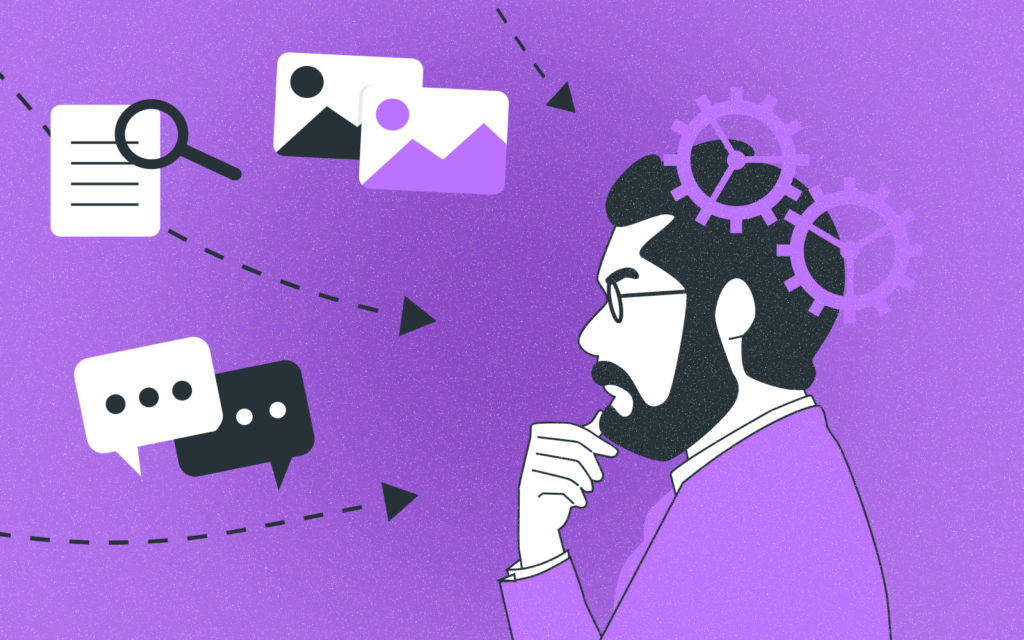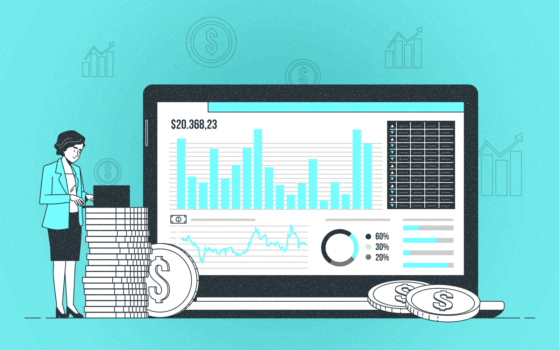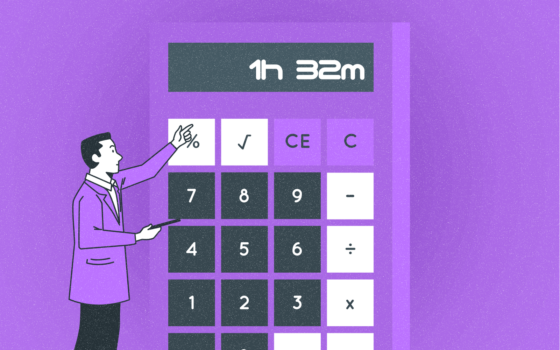The Power of Critical Thinking: 10 Steps for Personal and Professional Growth


Do you ever wonder why some people seem better at solving problems or making decisions than others? It’s not just luck or talent – it’s the power of critical thinking!
Critical thinking is an essential skill that helps us analyze information, identify biases, evaluate evidence, and make informed decisions. Whether you’re a student, a professional, or someone who wants to improve their critical thinking skills, this article is for you.
In this article, we’ll take ten easy steps to develop and improve your critical thinking and skills and help you achieve personal and professional growth.
By the end of this article, you’ll better understand the benefits of critical thinking and how it can help you in your everyday life. So, are you ready to take your thinking skills to the next level?
Let’s get started!
Step 1: Understanding the Foundations of Critical Thinking
“Savvy innovators should also consider how to build up their workforce’s non-technical proficiency, especially in critical thinking skills.” Deloitte.
Understanding the foundations of critical thinking is essential to evaluating data and making sound decisions. Understanding a better critical thinker requires an active listening approach, evaluating facts from many perspectives, and developing innovative problem-solving strategies.
Fundamental components of this process include:
- Separating assumptions from facts
- Objectively evaluating arguments for credibility
- Researching pertinent information for accuracy
- Evaluating opposing points of view
- Evaluating potential solutions for feasibility and effectiveness
- Approaching a problem with an open mind.
These can improve critical thinking skills, and observation skills can help develop accurate conclusions within any field or profession.
Critical thinking is analyzing, evaluating, and understanding information to make informed decisions. It involves using logic, reasoning, and problem-solving skills to identify the best solution or action.
In this article, we’ll discuss the elements of critical thinking, its benefits, and how it differs from other types of thinking.
Elements of Critical Thinking

Critical thinking requires an individual to consider multiple perspectives and analyze the evidence available before making a decision. Considering evidence objectively is key to discovering the truth. You must do this without allowing any personal biases or preconceived notions to interfere. Doing so will enable you to explore facts objectively and arrive at a reliable assessment unrestrained by external judgments.
The key elements of critical thinking include:
- Objectivity – looking at the facts objectively instead of through personal biases
- Analysis – breaking down information into smaller pieces to understand it better
- Reasoning – looking for patterns and connections between pieces of information
- Problem-solving – considering different solutions before selecting the best one
- Creative thinking – developing unique solutions beyond what is already known
Benefits of Critical Thinking
The primary benefit of critical thinking is that it helps individuals make more informed decisions. By applying these skills to any situation, individuals can gain insight into potential outcomes and identify potential risks or problems before they occur.
Additionally, critical thinking can help individuals become more flexible thinkers who can think outside the box and develop creative solutions. Finally, this thinking encourages collaboration by providing a framework for individuals to work together to solve complex problems.
How Critical Thinking Differs from Other Types Of Thinking
Critical thinking differs from other thought processes because it focuses on finding a solution based on evidence rather than intuition or personal preference.
Furthermore, creating informed decisions is a process that encourages iteration. This means carefully approaching each situation to discern the best answer and the most comprehensive evidence possible. Measurement is critical; evaluating all available factoids allows individuals to make more conscious and valued choices.
This distinguishes it from other forms of thought, such as creative or intuitive thinking, which are often less structured and rely more heavily on individual opinions or experiences.
Step 2: Identifying Your Biases

Critical thinking involves recognizing and analyzing the inherent biases in any situation. These biases can be conscious and subconscious, ranging from personal values to social stereotypes.
For critical thinking to be effective, it is crucial to identify and separate these biases from the facts.
When engaging in critical thinking, it is important to approach any situation objectively and without pre-existing assumptions.
Definition of Bias
Bias is the influence of personal opinion on a decision-making process. It can lead to inaccurate conclusions that appear logical but are not based on fact or research.
Biases are part of the human condition. They exist fundamentally within us, regardless of our willingness to admit them.
We naturally form opinions and beliefs based on our past experiences, upbringing, and ways of thinking; these foundations direct our responses and reactions in every situation. It’s almost as if we can’t help ourselves from having an instant judgment or assessment in any given scenario.
The challenge lies in recognizing and mitigating them when making important decisions.
Different Types of Biases
The most common types of biases include the following:
- Confirmation bias (looking for data that reinforces a preconceived notion)
- Self-serving bias (underestimating risk while overestimating potential rewards)
- Cognitive bias (inaccurate conclusions caused by distorted perceptions)
- Groupthink (a collective group mentality that suppresses individual thought)
- Recency bias (overestimating recent trends).
Each type can have an adverse effect on decision-making processes.
Why It Is Important to Identify Your Biases
Identifying your biases lets you make more informed decisions about your organization’s challenges. This involves understanding how these biases may affect individual behavior and collective outcomes so you can adjust accordingly. This will also help create a more trusting relationship between yourself and those around you by demonstrating open-mindedness and active listening skills instead of relying solely on opinions or gut feelings without any facts or evidence behind them.
Techniques for Identifying Your Biases
There are several techniques available for identifying your biases:
- Questioning assumptions regularly.
- Seeking out diverse perspectives from others
- Gathering data to support or disprove a hypothesis
- Recording thoughts objectively instead of attaching emotion to them
- Actively listening without interruption during conversations with colleagues
- Acknowledging opposing views even if they differ from yours, Etc.
All these methods require efforts but will ultimately result in better decisions across all areas of your business.
Step 3: Gathering Information or Data

Critical thinking often begins with analyzing data or information about a problem or question. This involves breaking down each piece of information into its parts and looking for patterns, connections, discrepancies, and other important details.
Analyzing data requires an open mind and the willingness to think beyond the surface to determine its relevance.
Types of Data Analysis
Data analysis typically involves looking for patterns, trends, and correlations. The analysis may include techniques such as descriptive statistics, predictive analytics, and sentiment analysis.
When analyzing data, it is essential to go beyond simply crunching numbers. True analysis includes using critical thinking to assess the collected information properly.
By thoughtfully considering each piece of data, you can arrive at more meaningful conclusions that will result.
Different sources of information
Different sources of information can be critical in the critical thinking process. These sources can include various media types, such as books, articles, online resources, and even conversations with experts or peers. Looking for reliable and trustworthy sources that provide accurate and up-to-date information is an important critical thinking skill.
In addition to these more formal sources, critical thinking should include personal experiences, insights, and intuition. By considering all these sources, a critical thinker or thinkers can gain a more comprehensive perspective on any issue and come to more informed conclusions.
These three steps lay the foundation for critical thinking:
- Understanding the problem or question at hand.
- Gathering relevant data.
- Analyzing it with an open mind.
Evaluating the credibility of sources
The credibility of sources is essential in critical thinking. By verifying the information from different sources, critical thinkers can ensure that they rely on accurate and credible data for their informed decision-making process. This is especially important when making decisions based on research or other external sources.
Techniques for gathering information effectively
Effective techniques for gathering information involve being mindful of the critical thinking to process and analyze information with, researching diverse sources, and validating information.
- Critical thinkers should remain cognizant of their critical thinking process and the steps they take to reach conclusions.
- Critical thinkers should research diverse sources to gain a more comprehensive perspective on any issue. This includes using various media types such as books, articles, online resources, conversations with experts or peers, and personal experiences.
- Critical thinkers must validate the information from each source to ensure that their decision-making process relies on accurate and credible data.
By using these techniques, critical thinkers are more likely to make informed decisions with confidence.
Get more out of your business
Get the best employee engagement content every week via mailing list
Step 4: Analyzing Information

Analyzing data allows you to identify trends that would otherwise go unnoticed. It enables you to extract meaning from raw facts and draw conclusions. Uncovering these insights can offer great potential for tapping into new business directions and ideas.
Digging deeper can provide an in-depth understanding of what current and prospective customers want, allowing companies to create enhanced services or products to meet those needs. This process can generate unique strategies which encourage the adoption of innovative approaches in the organization or by its clients.
Methods of Analysis
There are many approaches to analyzing information, such as
- Qualitative analysis (looking at non-quantifiable factors).
- Quantitative analysis (utilizing statistics and numbers), or a combination of both.
- Exploratory analysis (uncovering patterns and relationships in data).
- Predictive analysis (predicting future outcomes based on past performance).
- Diagnostic analysis (identifying root causes).
Each analysis method offers distinct advantages in certain areas. On the other hand, each one also has its potential shortcomings. Before settling on a particular analysis type, it’s critical to consider the pluses and minuses unique to that approach.
Organizing Information for Analysis
Organizing data for analysis is key to success; otherwise, you may end up with a jumbled mess of information that’s hard to interpret. One approach is using spreadsheets or databases to store raw data in tables or charts, which makes it easier to visualize patterns among different sets of information.
Another is using special software that helps organize data into easy-to-read visualizations, like dashboards or graphs.
Step 5: Developing and Evaluating Arguments

In business, there are times when you need to make a persuasive argument that is both clear and concise. To do this, it’s important to understand the following:
- The definition of an argument
- Familiarize yourself with different types of arguments.
- Learn how to develop an argument.
- Have techniques for evaluating arguments.
Definition of an Argument
An argument is a process of reasoning or evidence in support of a claim or proposition. When making an argument, one should present facts and data as a thesis statement to persuade others to accept their point of view.
Different Types of Arguments
Three main types of making an argument: deductive, inductive, and causal.
- Deductive arguments use logical reasoning from accepted premises to reach conclusions about specific cases.
- Inductive arguments rely on probability and generalizations from past experiences rather than logic alone.
- Causal arguments attempt to establish cause-and-effect relationships between two events by examining their relationship over time or through experiments.
How to Develop an Argument
Using reliable sources such as academic journals or professional organizations is important. Reliable sources will help ensure accurate data and research back up your claims that your audience can trust. It’s also important to provide clear examples supported by hard evidence so readers can see why your position is valid.
Finally, be sure not to jump around too much when making your point — instead, focus on supporting each point logically so that the reader can follow your thought process easily.
Techniques for Evaluating Arguments
When evaluating someone else’s argument, it’s essential to consider the source — make sure the facts you hear are true before making up your mind.
Additionally, look out for any potential bias in the argument; try not to let anyone else’s personal opinions influence yours too heavily if they don’t align with your own values and beliefs.
Lastly, ask yourself how likely it is for the conclusion drawn from the given evidence to be true — this will help you determine whether or not you believe in someone else’s argument before forming your own opinion.
Step 6: Recognizing Logical Fallacies

Logical fallacies are errors in reason or critical thinking that can lead to flawed conclusions. Fallacies are two kinds: formal fallacies and informal fallacies.
- Formal fallacies are errors in an argument, such as invalid deductive reasoning (e.g., affirming the consequent).
- Informal fallacies are errors in an argument’s content, such as oversimplifying a complex issue or overlooking significant evidence.
Why is it important to recognize logical fallacies?
Logical fallacies are wrong ways of thinking that can make an argument wrong. It is crucial to recognize logical fallacies to evaluate arguments effectively, identify weaknesses in reasoning, and make better decisions.
By recognizing logical fallacies, we can enhance critical thinking skills, challenge existing beliefs and assumptions, and gain insight into different points of view.
Techniques for recognizing logical fallacies
One of the most important techniques for recognizing logical fallacies is to be familiar with the different types of logical fallacies and their characteristics and common examples. One way to become familiar with logical fallacies is to read articles or textbooks that discuss critical thinking, argumentation, and logic.
Another technique for recognizing logical fallacies is to practice critical thinking skills. By engaging in critical thinking exercises, one can apply critical thinking skills and become more adept at recognizing logical fallacies.
Finally, it is important to be aware of any biases or preconceived notions that may lead to faulty reasoning when evaluating arguments or making decisions. It is critical to remain objective and open-minded when engaging in critical thinking tasks.
By recognizing logical fallacies and applying effective critical thinking and techniques, one can become better at critical thinking and make more informed decisions.
Step 7: Assessing Assumptions

Critical thinking is assessing assumptions. Assessing assumptions means you look at what you think is true and check if it is true. You do this by looking for evidence that supports or does not support the assumption.
If you can find facts to back up your idea, then it’s a good assumption. If not, it may need more thought or research before being accepted as fact.
Definition of assumptions: A statement taken for granted or accepted as true without proof.
Assumptions can be dangerous because they limit critical thinking. To truly think critically, you must be open to seeing things from different perspectives and recognize that what we assume may not necessarily be true.
How to identify assumptions?
1. Identify the conclusion that you are trying to make or draw.
2. Look at all of the facts and evidence surrounding the conclusion.
3. Look at all the facts and evidence. See if proof exists to show it is true or just an assumption.
4. Evaluate each assumption to determine its validity.
5. Re-examine your conclusion in light of the valid assumptions and other factors you’ve identified and see if it still holds or needs to be adjusted.
Assessing assumptions is a key component of personal and professional growth; it requires much more than halfhearted attention. Critical thinking is the lifeblood of this process, as it allows you to probe further by questioning commonly accepted beliefs to prevent mistakes.
So take the time to evaluate assumptions before you make any conclusions or decisions! You won’t regret it.
Why is it important to assess assumptions?
It is crucial to assess assumptions because it helps you think critically. When you assess assumptions, you look at what you believe is true and check if it is true. You do this by looking for evidence that supports or does not support the assumption.
Your critical thinking strategies should be formidable; building conclusions driven by facts and sound evidence is key. It’s crucial to avoid guessing or making faulty assumptions to define these strategies. Using factual information and logical reasoning will bring you greater security when asserting yourself and your opinions.
Assessing assumptions can also help prevent critical mistakes and help make sure decisions are made with evidence rather than guesses.
Step 8: Evaluating Evidence

Evaluating evidence is an integral part of critical thinking. It helps you to decide if something is true or not. To evaluate evidence, you must look at the facts and determine if they support what you think is true. You can do this by looking for proof that the facts are correct or incorrect.
If there is proof, then your idea may be true. If there isn’t any proof, then it might need more thought or research before being accepted as fact.
Taking the time to check your ideas with evidence will help you improve your critical thinking skills and that decisions are based on facts instead of guesses!
Step 9: Making Decisions
Making decisions is important because it helps you make choices that will lead to the best outcomes. You can use different models and techniques to make decision-making tools to help make decisions effectively.
- Rational Decision-Making Model.
This model involves gathering information, analyzing the data, making a decision based on, and then evaluating the outcome of that final decision afterward.
- Intuitive Decision-Making Model
It involves using intuition or gut feeling to make a decision.
There are also some decision-making techniques, such as brainstorming ideas, getting feedback from others, setting goals and objectives, and weighing the pros and cons of each option before deciding on one.
Once you have decided the final step, it’s essential to take a step process and evaluate it afterward to determine whether it was effective. You can do this by looking at the results of your decision and seeing if they match up with what you wanted them to be.
Step 10: Communicating Effectively

Communicating effectively means saying what you mean in a way that is easy for others to understand. Good communication skills are vital because it helps you share your ideas, feelings, and thoughts with other people.
Different communication styles include talking, gestures, writing, and body language. You can use active listening, being clear when speaking, and asking questions if needed to communicate effectively.
How to communicate critical thinking effectively?
Communicating and thinking critically and effectively requires being clear and concise. You should explain the steps of the critical thinking process you took to reach your conclusion and why they were important.
Make sure to clearly define any terms or concepts you use so the person on the other end can understand what you mean.
Additionally, back up your conclusions with evidence if possible so that the person on the other end can trust your judgment and reasoning. Finally, listen to any feedback or questions they have and be open to new perspectives as you discuss important critical thinking skills together.
Conclusion
Critical thinking is essential for both personal and professional growth. It helps individuals to develop critical thinking skills, think deeply about issues, identify relationships between facts or ideas, and make informed decisions. With strong critical thinking abilities, people can challenge assumptions, evaluate evidence objectively and develop creative solutions to complex problems.
On a professional level, critical thinking is a valuable skill, enabling people to explore any issue from all angles. It encourages an open, unbiased mindset that considers various possibilities.
Critical thinking can help organizations make better decisions while staying focused on their goals. Additionally, good critical thinkers can ask questions that further expand discussions instead of merely seeking agreement with their own opinions or ideas.
Therefore, critical thinking is essential for successful problem-solving. By following the steps of critical thinking, people can evaluate evidence objectively, identify relationships that may have been overlooked and develop better solutions in a shorter time frame.
Critical thinking is an invaluable skill that can help individuals personally and professionally. By going through the process step by step, critical thinkers can uncover new insights, ask thought-provoking questions, and develop creative solutions to complex problems. So the next time you have a difficult decision or problem, remember that critical thinking can be your ultimate guide. Discover the power of critical thinking today!


